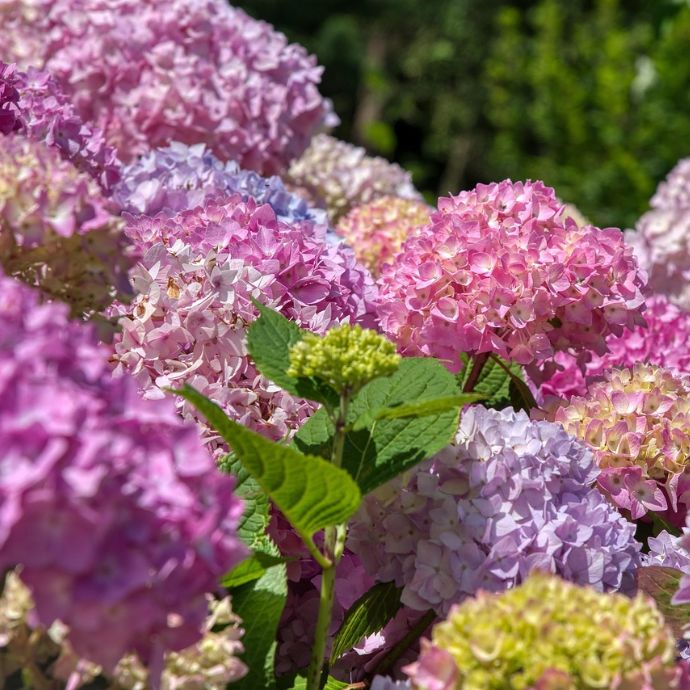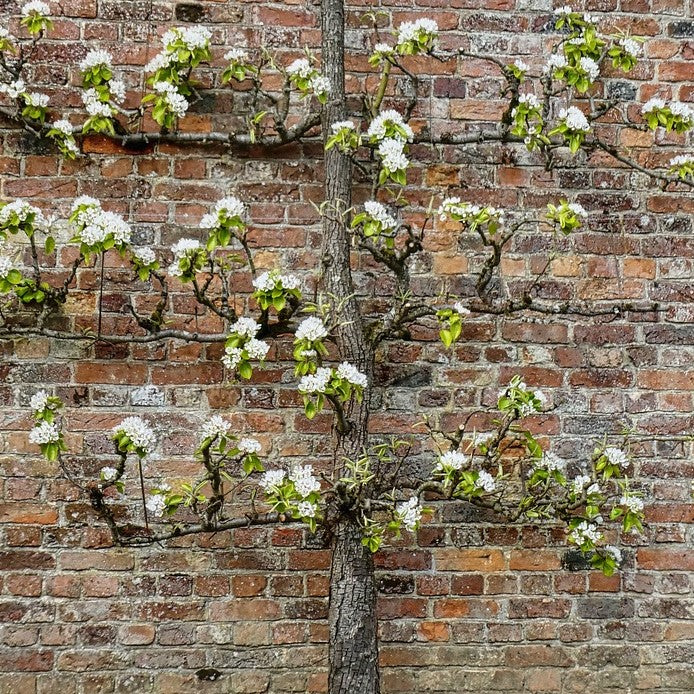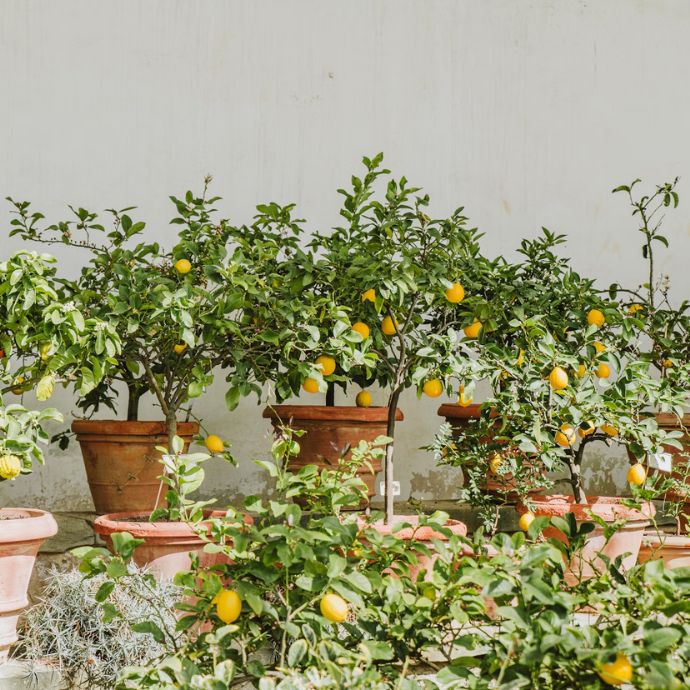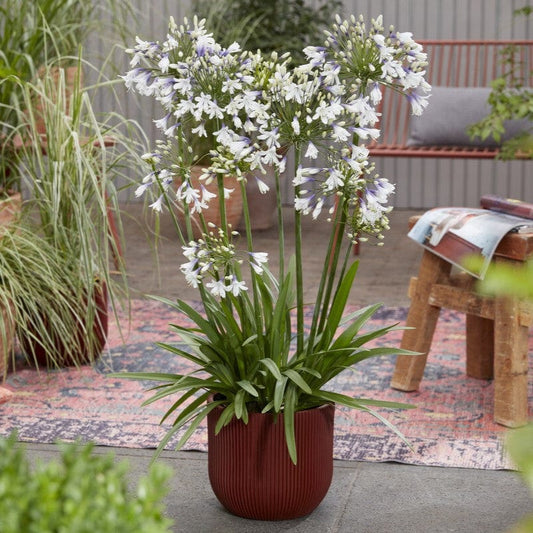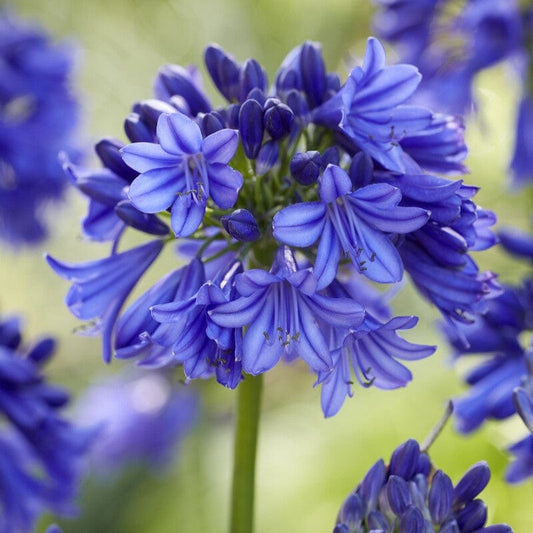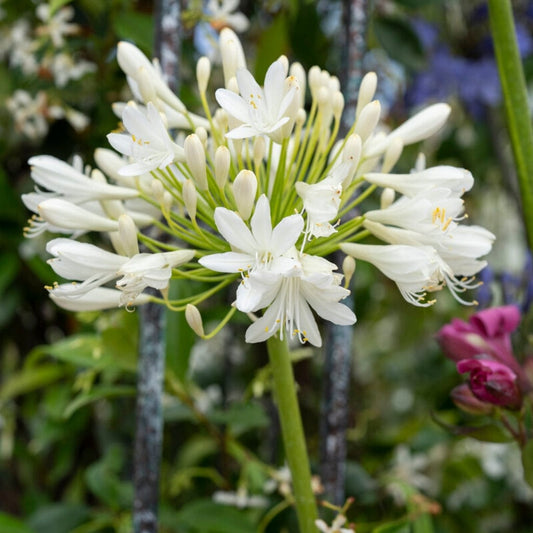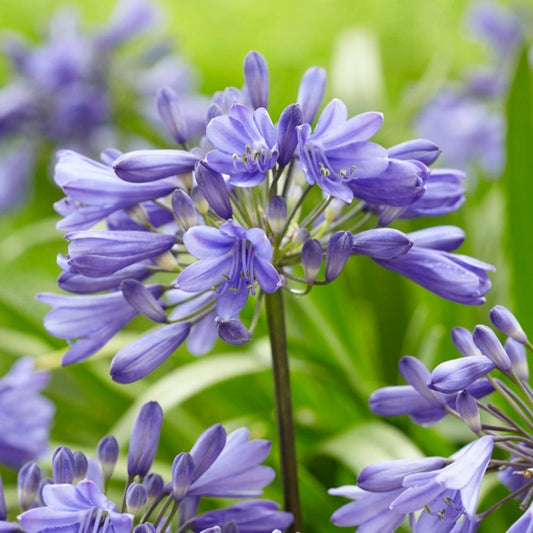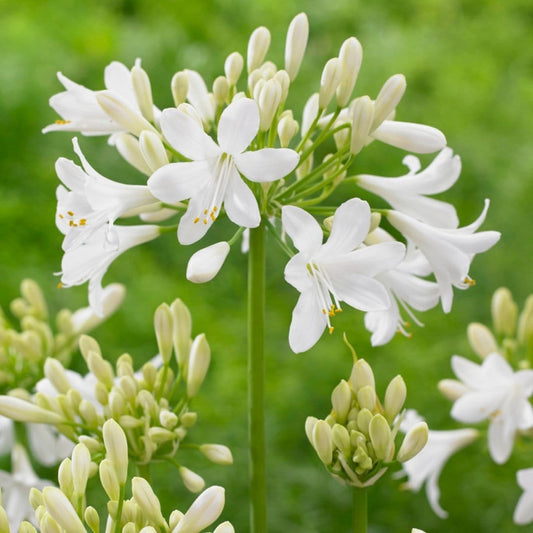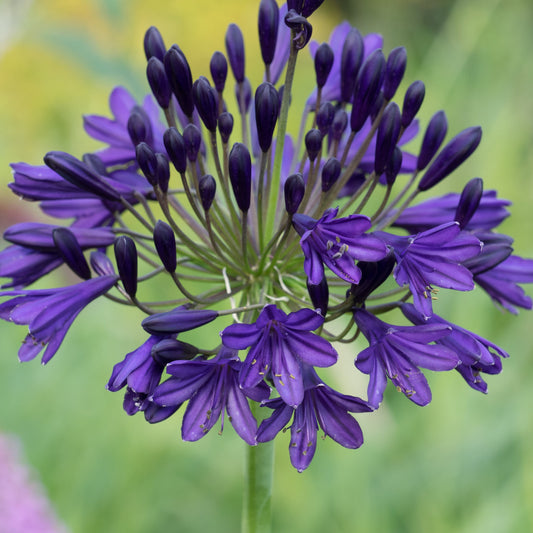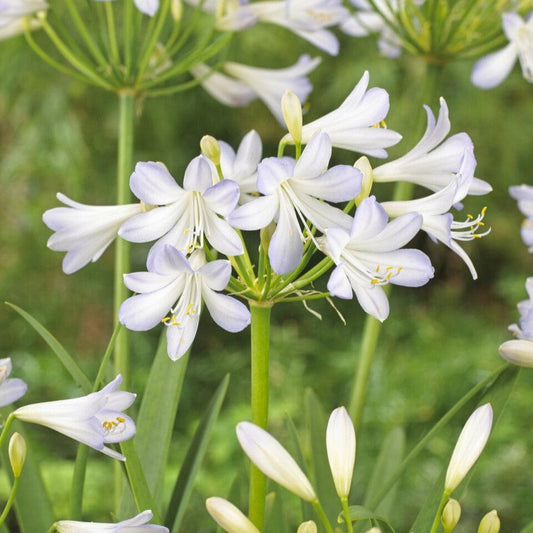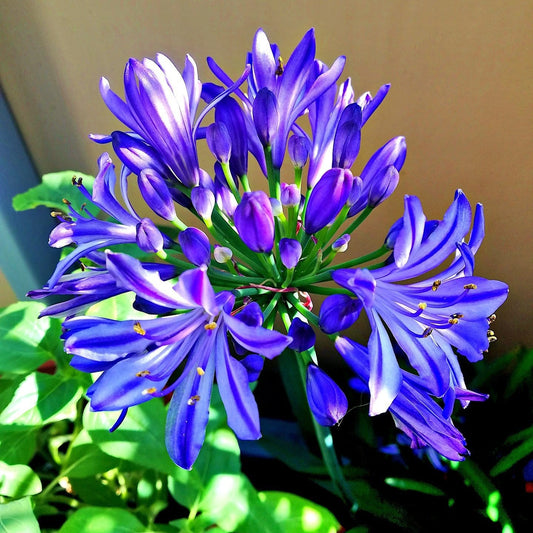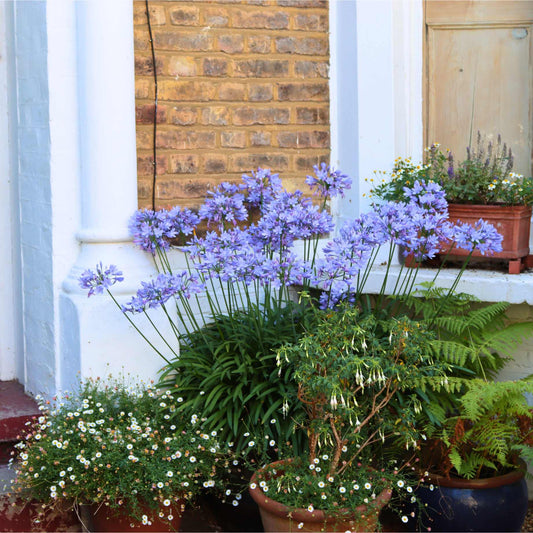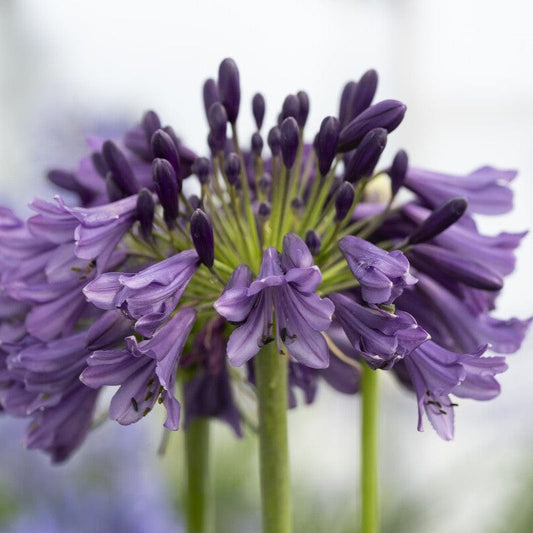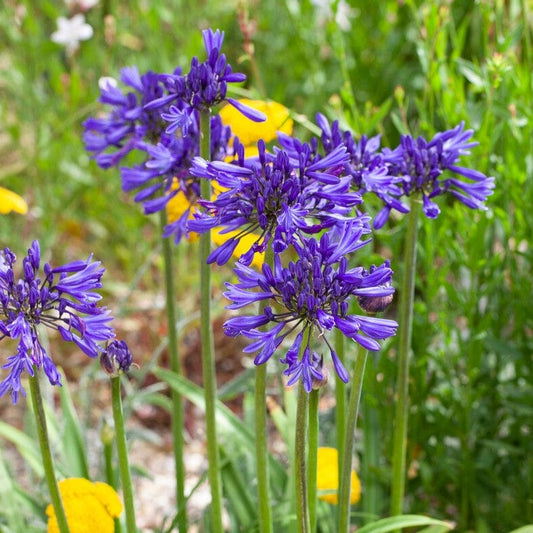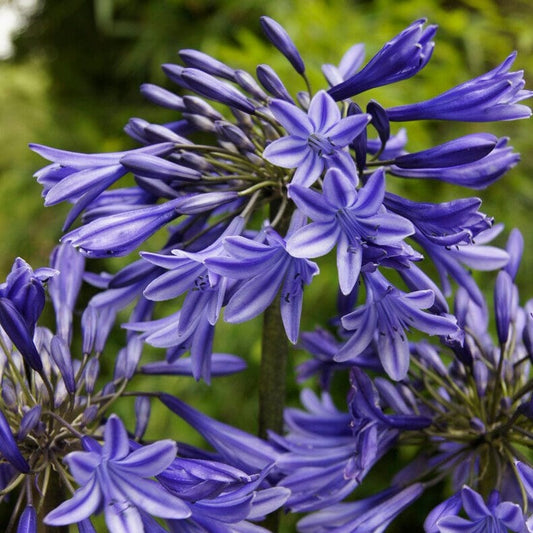Agapanthus Care Guide: Planting, Flowering and Dividing
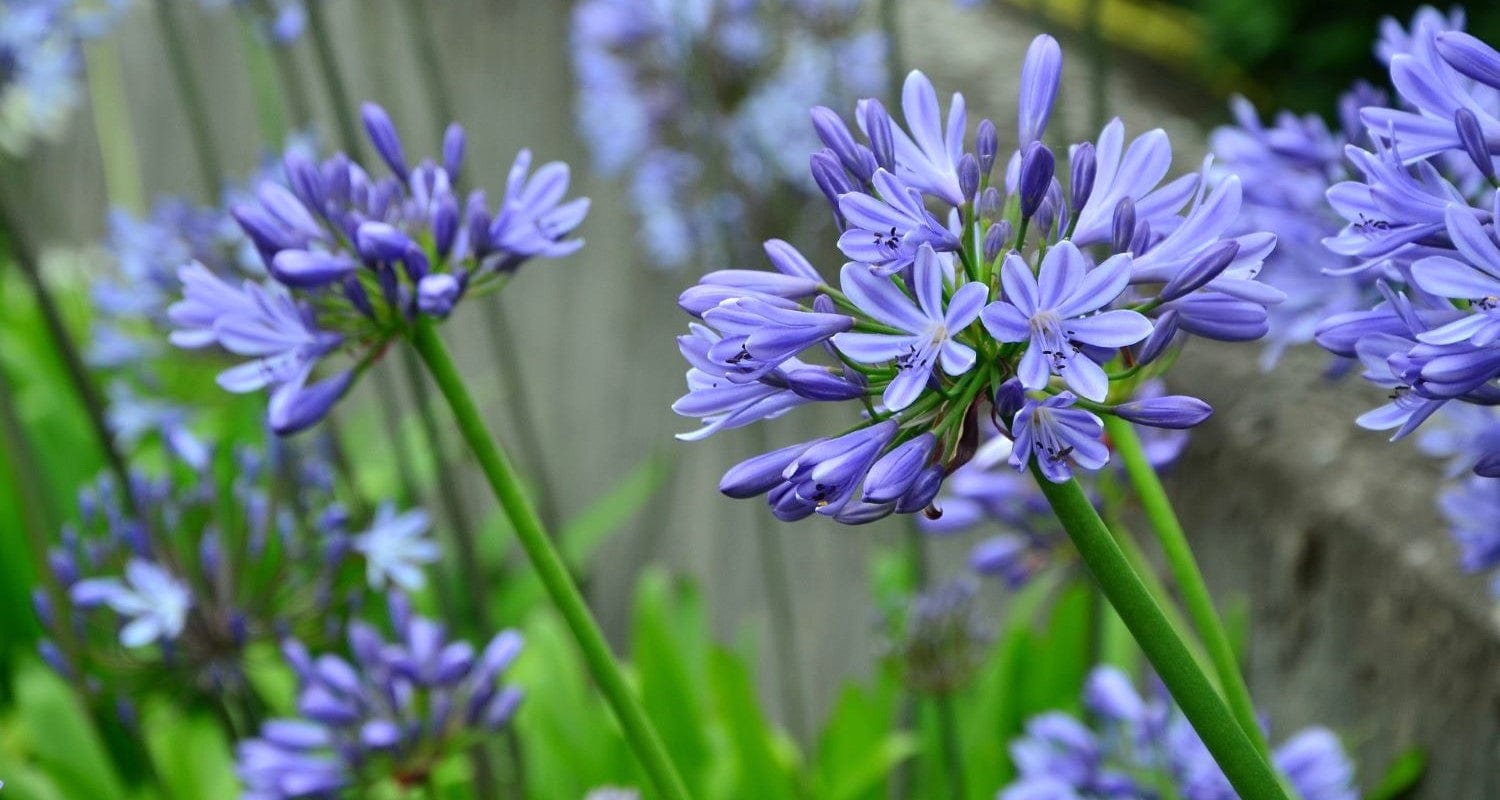
Agapanthus is one of the most striking perennial plants. From luscious leaves sprout upright stalks topped with globes of delicate flowers, like bursts of fireworks. You’ll find varieties in blue, purple, white and even two-tone colouring.
Native to South Africa, agapanthus is surprisingly tolerant of British conditions. The hardiest varieties are deciduous, while evergreen plants may be better off in pots, so they can be moved inside a greenhouse over winter. With a bit of love, and the tips in this agapanthus care guide, you'll have no problems growing these beauties.
If you're in a rush, here's what you need to know. Agapanthus bulbs should be planted in spring, roughly 5cm deep in the ground, in loamy, well-drained soil in a fully sunny position. Water your plant(s) regularly throughout the growing season to help it establish. Feed your agapanthus with a high-potassium feed (like tomato feed) fortnightly during the growing season. Deadhead spent flowers and mulch around the base of the plant in autumn to help give some protection from the cold. Carry out any lifting and dividing in early spring, before the flowering season starts.
Jump to:
- When to plant
- Where to plant
- Watering and feeding
- When do agapanthus flower?
- Deadheading
- Overwintering
- Diseases
- Dividing agapanthus
- Planting in pots
When should you plant agapanthus bulbs?
If you’re planting agapanthus bulbs or rhizomes, do so in the spring, from the end of March through April. Pop them 5cm deep into the soil with the pointy end upwards. You can also buy potted agapanthus plants already in bloom to plant straight in the ground.
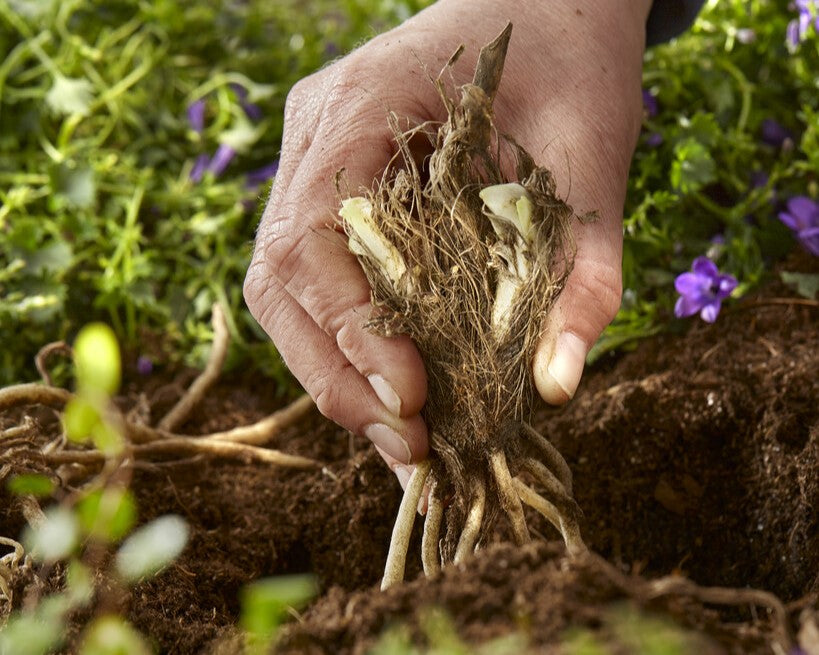
Where should you plant agapanthus?
Agapanthus works well in borders and containers, and they love the sun! A little shade will be fine, but the more sun, the more flowers. Agapanthus can cope well with winds and salt spray, making them suitable for coastal locations.
The stems vary in height from 20cm to 1.5m, so bear this in mind when placing your chosen plants - taller at the back, shorter at the front.
How much watering does agapanthus need?
Water newly-planted agapanthus plants regularly throughout the summer to help them establish. Also, water existing plants throughout May and June in the lead up to the flowering period. If it’s a very dry year, some later summer watering can help produce better flowers the following year.
Do you need to feed agapanthus?
Feed your agapanthus with a high potassium fertiliser once a fortnight in summer (something like tomato feed works well). Our growers say, "A sprinkle of sulphate of potash can also encourage flower quantity and colour. Avoid giving plants too much nitrogen or you will encourage lush leaves at the expense of flowers."
When do agapanthus plants flower?
Agapanthus has a long flowering period from midsummer to early autumn.
"Why is my agapanthus not flowering?"
Is it getting enough sun?
Agapanthus needs about 6-8 hours of sunlight a day, so flowers best in full sun or partial shade.
Is it waterlogged?
Agapanthus needs well-drained, fertile soil (if this doesn’t suit the soil in your garden, you may be better off growing agapanthus in containers).
Is it getting enough water and food?
Good refreshment last year and throughout the flowering season will pay off (see advice above).
Has it been protected over winter?
Some agapanthus are a little tender and need some TLC during the colder months (see below).
Is its container a good size?
If your agapanthus is in a pot, it should be snug. When it gets pot bound, repot into one 2.5-5cm larger every few years or divide the plant (more info below).
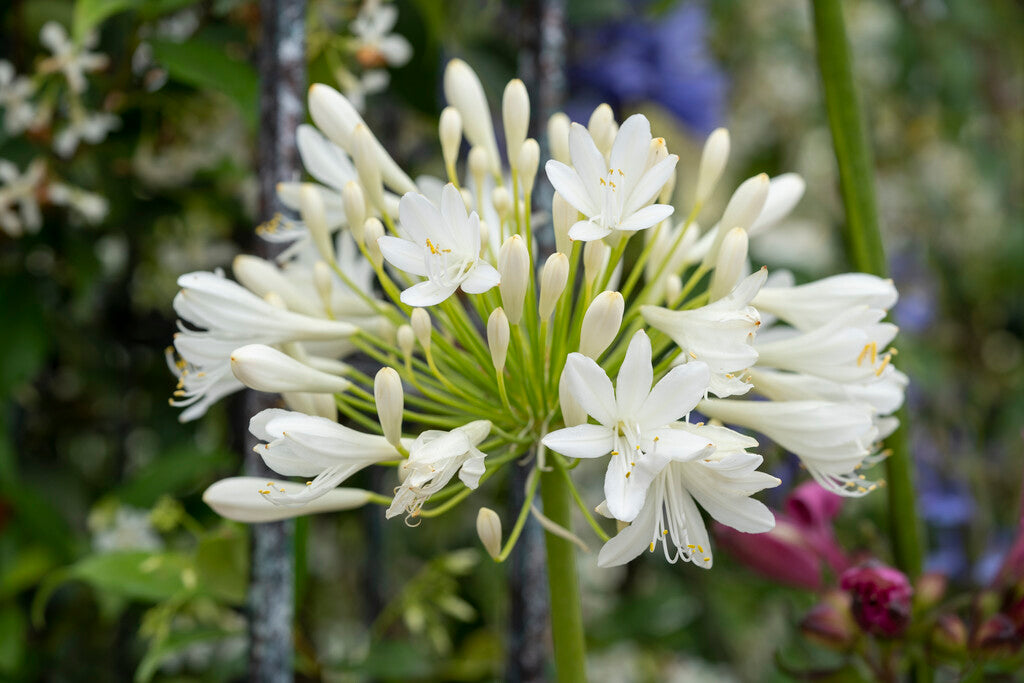
Should you deadhead agapanthus flowers?
When the flowers’ colours have faded, you can deadhead them by cutting off the flower at the base of the stem. (Alternatively, you can leave the seedhead on the plant for some winter interest.)
In the autumn, trim any yellowing leaves as they die back. It’s best to leave the leaves on the plant while they’re green, as they’re storing up energy during this time ready for next year’s bloom.
Does agapanthus need overwintering?
Some agapanthus need a little more care than others over winter:
- The hardiest deciduous plants can be left in the ground over winter. In the autumn, cover the crown with about 7cm of mulch (e.g. straw or leaves) to give it a bit of insulation, then remove this in the spring so the plant doesn’t rot.
- If the flower bed is in a cold, exposed location or likely to get waterlogged over winter, it may be best to dig up your plant and shelter it elsewhere. Move it into a bed or pot within a cold frame, polytunnel or greenhouse and give it a little water so it doesn’t dry out completely.
- Tender or potted agapanthus should be moved into a sheltered location where they will be free from frost (do so before the first frost in autumn and move back after the last frost in spring). An unheated greenhouse or even the base of a sunny wall may be suitable.
What pests and diseases affect agapanthus?
Agapanthus is generally pest and disease-free. In the past decade, however, a few gardeners have discovered agapanthus gall midge, which grows in the flower buds, causing them to brown, deform and stay closed.
How do you lift and divide agapanthus?
You can divide established agapanthus clumps into smaller clumps to propagate more plants, each being genetically identical to the original. (If you propagate from seed you’re unlikely to end up with exactly the same flowers, as the plant may have cross pollinated with other varieties.)
The best time to divide agapanthus is late March to April, before the flowering season. Lift the plant out of the ground and split the root clump with a sharp spade or two forks back-to-back, making sure each of the new clumps has at least two growing points. Then simply plant these out as usual. Most agapanthus plants benefit from dividing every 3-5 years.
Tips for planting agapanthus in pots
Agapanthus plants are quite happy to be grown in pots. In fact, the evergreen types that are not fully hardy may be better off in containers so they can be protected from frost over winter in a cool greenhouse.
For the best flowering, agapanthus likes to be cosy in its pot. Start each plant off in a container of around 20cm diameter, potting it up with loam based compost. If the plant starts to get pot bound (you may see it wilting or roots pushing out of the soil), repot it into a container about 2.5-5cm wider every few years or take out the plant and divide it (see above).
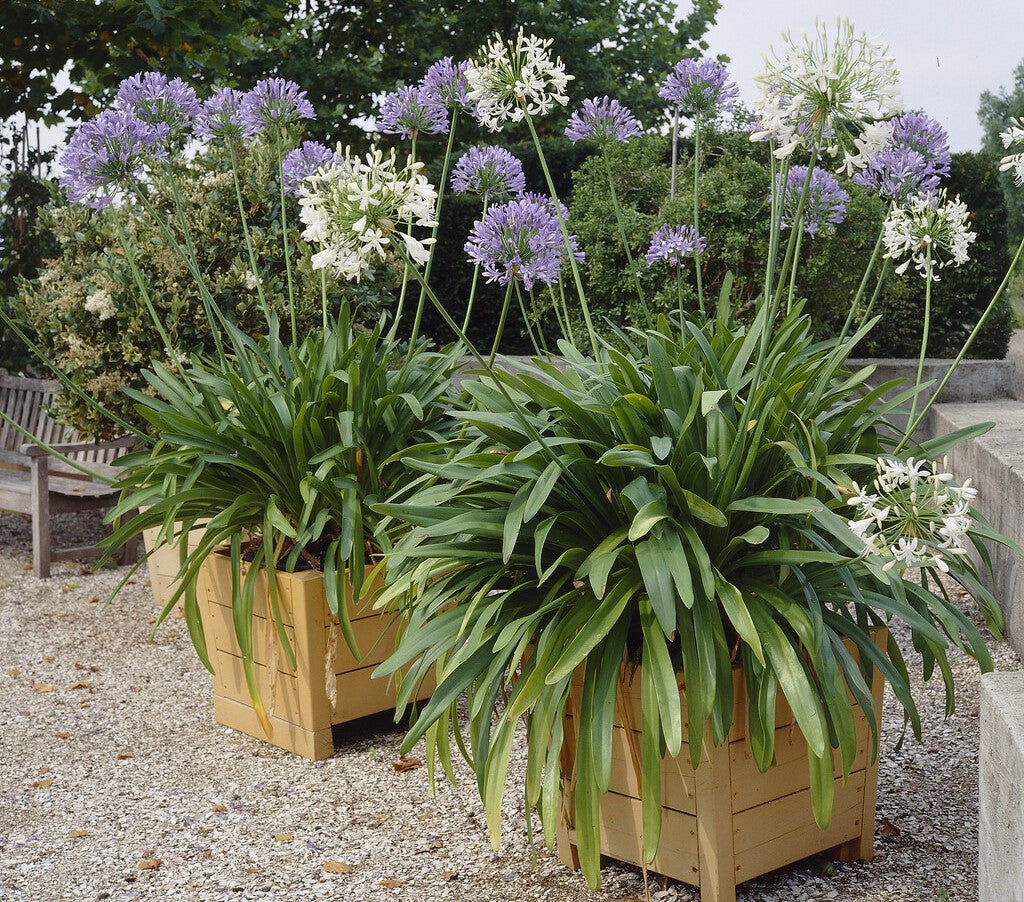
Last updated: 17/10/2025



